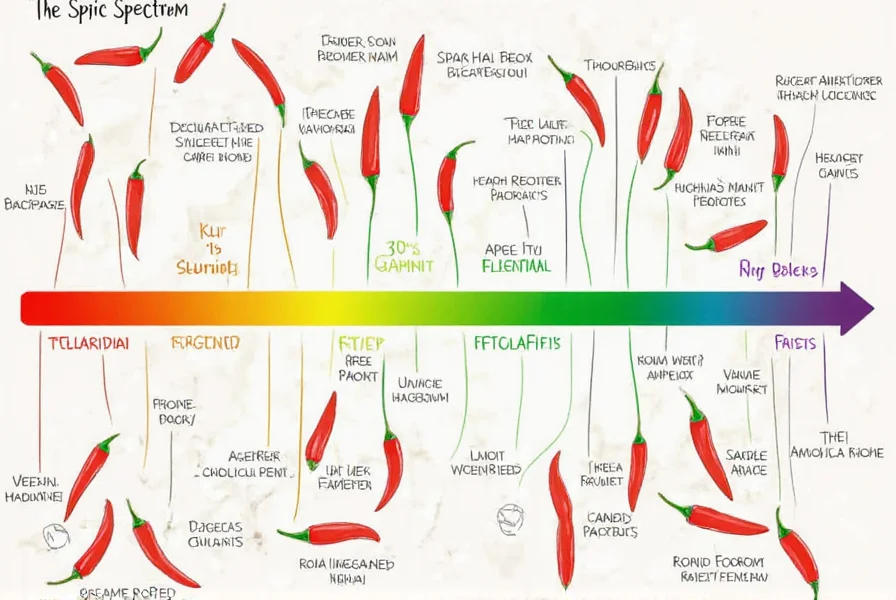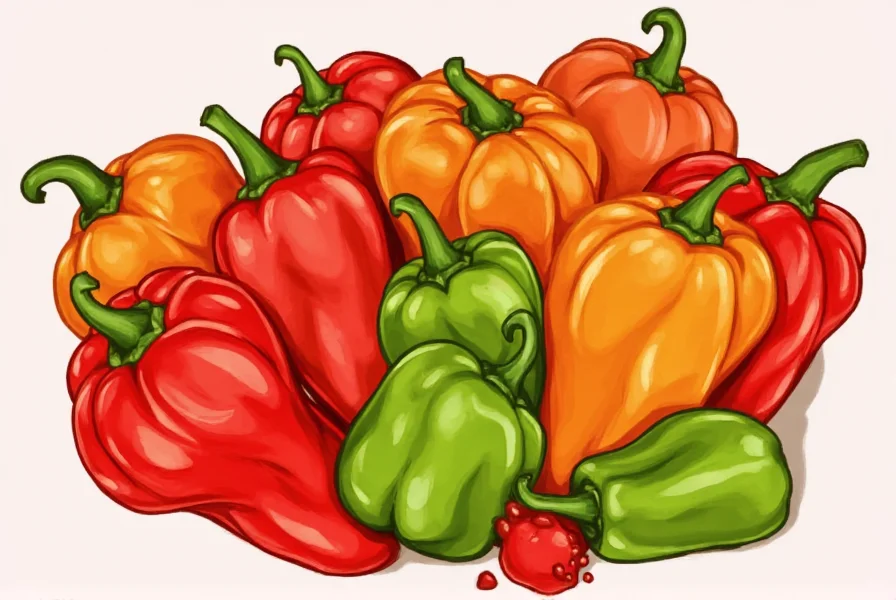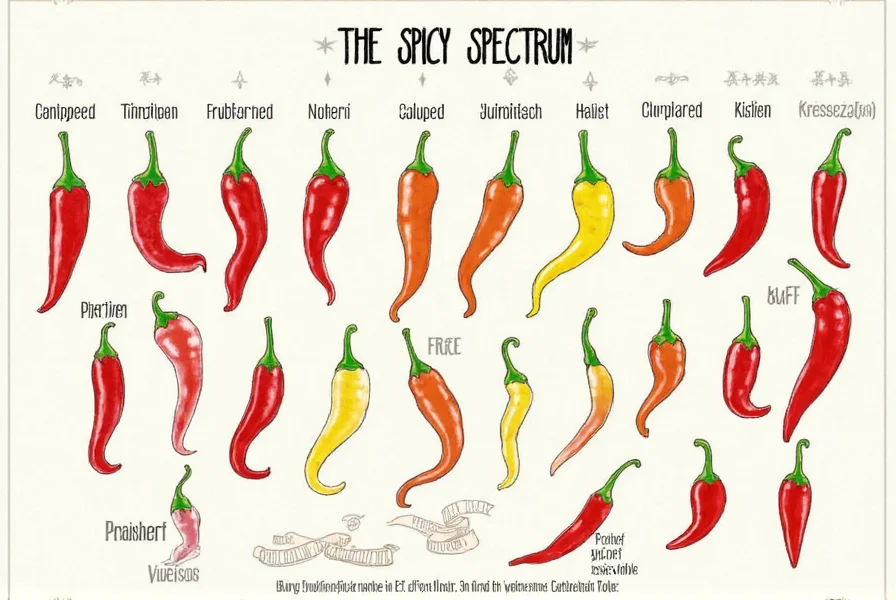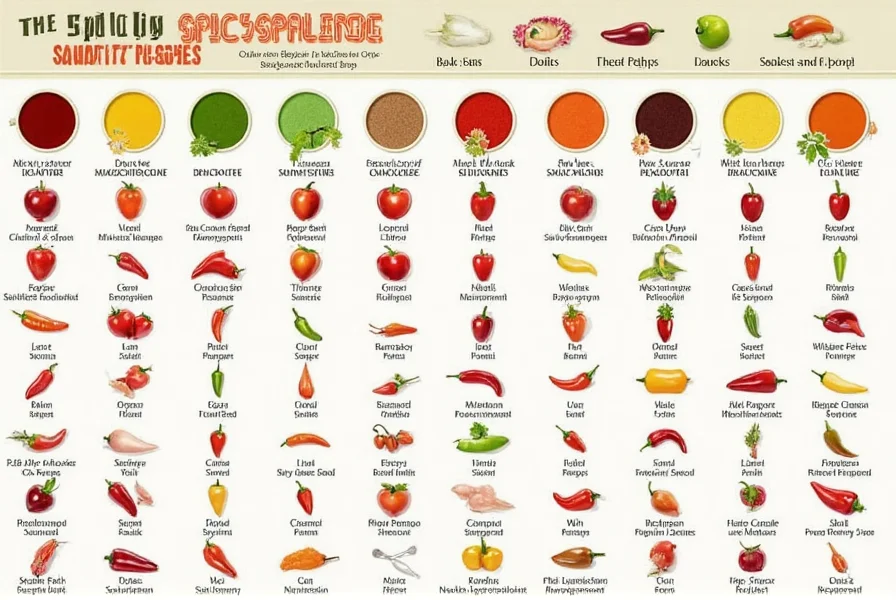Introduction to Spicy Peppers Chart
This comprehensive chart details the Scoville Heat Units (SHU) of 20+ popular spicy peppers, including flavor profiles and common culinary uses. Whether you're a home cook or a chili enthusiast, this reference helps you choose the right pepper for your dish.

Understanding the Scoville Scale
The Scoville Scale measures pepper heat intensity based on capsaicin concentration. Higher SHU values indicate greater spiciness. Modern testing uses HPLC for accuracy, though the scale remains a practical tool for comparing pepper heat levels.

| Pepper Name | Heat Level (SHU) | Flavor Profile | Common Uses |
|---|---|---|---|
| Bell Pepper | 0 | Sweet, crisp, and refreshing | Salads, stir-fries, stuffed dishes |
| Poblano | 1,000–2,000 | Earthy, mild, slightly sweet | Chiles Rellenos, moles, roasting |
| Pepperoncini | 100–500 | Tangy, slightly bitter, mild heat | Pickling, salads, sandwiches |
| Anaheim | 500–2,500 | Fruity, grassy, moderately mild | Southwestern dishes, green chile sauce |
| Jalapeño | 2,500–8,000 | Mildly spicy with a fresh, grassy flavor | Guacamole, salsa, stuffed peppers |
| Fresno | 2,500–10,000 | Bright, slightly sweet, similar to jalapeño | Salsas, sauces, garnishes |
| Serrano | 10,000–23,000 | Sharp and tangy, with a slight citrus note | Hot sauces, salsas, pickling |
| Thai Bird's Eye | 50,000–100,000 | Intense, floral, and citrusy heat | Thai curries, stir-fries, dipping sauces |
| Cayenne | 30,000–50,000 | Strong, pungent, and slightly sweet | Powdered seasoning, chili pastes, stews |
| Tabasco | 30,000–50,000 | Vinegary, tangy, bright heat | Hot sauces, marinades, cocktails |
| Malagueta | 60,000–100,000 | Grassy, citrusy, intensely spicy | Brazilian and African cuisine, sauces |
| Habanero | 100,000–350,000 | Smoky, fruity, and very spicy | Hot sauces, marinades, desserts |
| Scotch Bonnet | 100,000–350,000 | Sweet, tropical, intensely hot | Caribbean jerk sauces, stews |
| Trinidad Moruga Scorpion | 800,000–2,000,000 | Fruity upfront with brutal delayed heat | Extreme hot sauces, challenges |
| Bhut Jolokia (Ghost Pepper) | 800,000–1,041,456 | Intense heat with a sweet, smoky finish | Extreme chili recipes, challenge foods |
| Naga Viper | 1,000,000–1,400,000 | Complex fruit notes with searing heat | Specialty sauces, culinary challenges |
| Carolina Reaper | 1,400,000–2,200,000 | Extremely hot with a fruit-forward aroma | Chili challenges, specialty sauces |
| 7 Pot Douglah | 900,000–1,800,000 | Chocolatey undertones, explosive heat | Caribbean hot sauces, extreme cooking |
| Dragon's Breath | 2,480,000+ (unofficial) | Sweet initially, then overwhelming heat | Medical research, novelty challenges |
| Pepper X | 3,180,000 (verified) | Nutty, slightly sweet before extreme heat | Record-breaking challenges, extracts |

Conclusion
Understanding pepper heat levels is key to enhancing your culinary creations. Use this chart to confidently select peppers that match your desired spice level and flavor profile.











 浙公网安备
33010002000092号
浙公网安备
33010002000092号 浙B2-20120091-4
浙B2-20120091-4